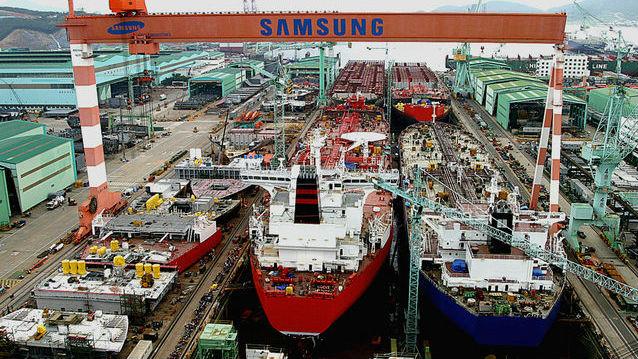According to data from Clarkson Research, newbuilding prices for both tankers and bulk carriers have risen for the past two months.
The price of a new VLCC of 310,000 dwt stood at $80.5 million this month, after falling to $80 million earlier this year, with the comparable figure for a new oil tanker of 75,000dwt rising to $41.5 million this month from a low of $41 million.
Samsung Heavy Industries, one of South Korea’s top three yards, recently won a $100 million deal to build two LNG carriers from a local shipping firm, raising its orders for this year to $2.3 billion for 12 ships. The yard has also signed a letter of intent with an unidentified Greek owner to build up to eight VLCCs, with the deal valued at $650 million. It is also rumored to be negotiating a deal for an FLNG facility worth $2.5 billion.
Hyundai Heavy Industries and it’s affiliates have $2.3 billion in orders placed so far this year for 39 ships, including nine VLCCs. Last month, Hyundai Heavy Industries was split into four independent entities: shipbuilding, electronics, construction equipment and robotics, a move aimed at boosting competitiveness in each sector.
Hyundai Heavy Industries has now posted five consecutive quarterly profits largely due to its Shipbuilding Division. Its revenue is up 251 percent from the first three months of last year.
Daewoo Shipbuilding & Marine Engineering recorded a return to profit in the first quarter of the year, largely thanks to cost-cutting measures. The yard has secured an order from a Greek owner to build three VLCCs this year and signed a letter of intent with local shipping firm Hyundai Merchant Marine to build up to 10 VLCCs.
Clarkson Research says VLCC newbuilding prices fell to their lowest level in 14 years in March this year.
Source: MarEx 2017-05-30



















